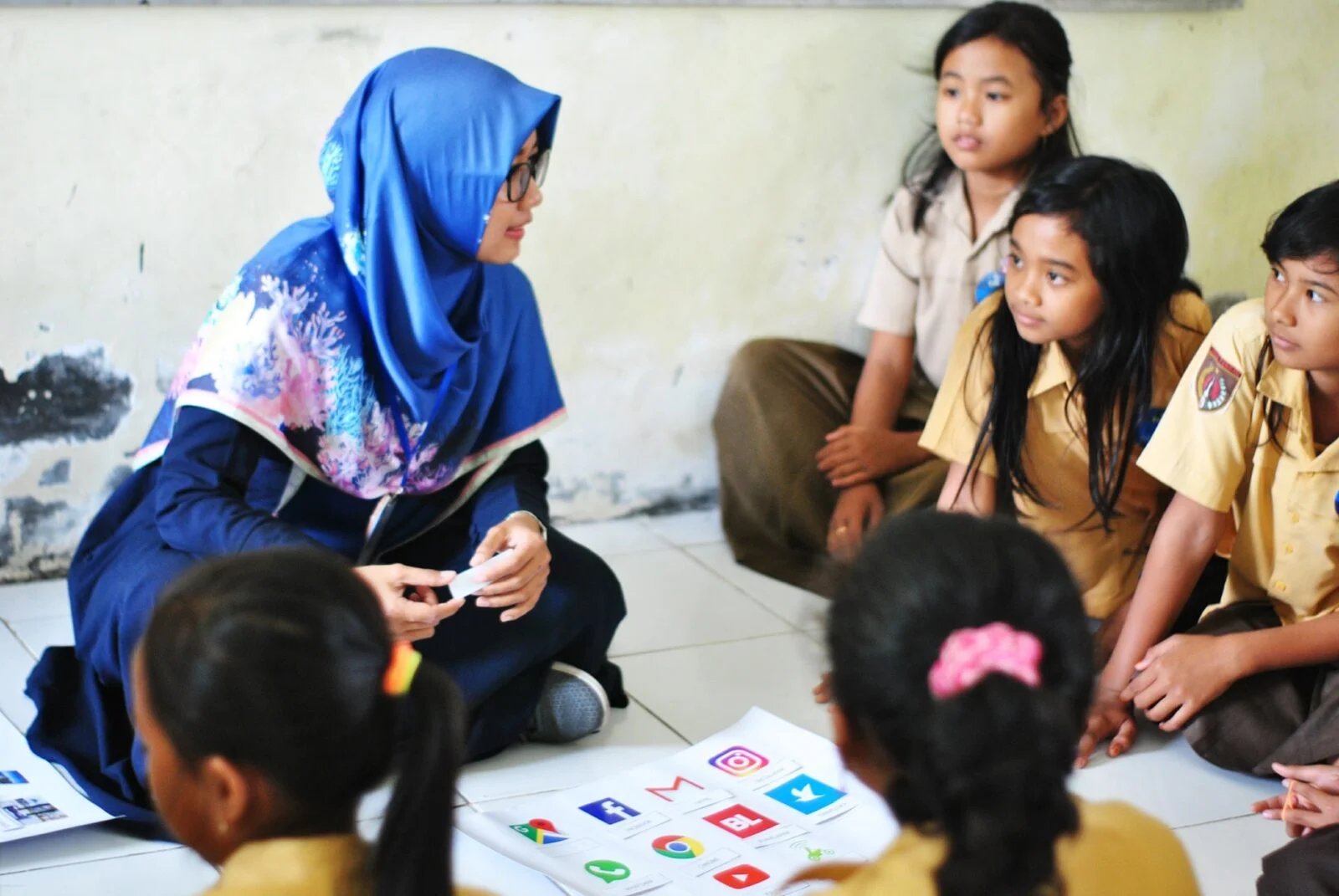The design of the 21st-century classroom differs in many ways from the 20th-century setup. Away from the teacher-centered methodology, the new classroom focuses on the learner, in addition to integrative approaches to learning.
The new classroom can be a physical location, online platforms, and virtual spaces, such as the Metaverse. It focuses on enhancing 21st century skills such as critical thinking, creativity, collaboration, effective communication, and active learning.
By the time a student leaves the classroom, he should have acquired relevant knowledge and a responsive mindset. This is in addition to practical skills needed for active use in the real world.
… of note!
The push towards the 21st-century classroom ONLY received the boost it deserved in 2020, because of the COVID-19 pandemic. This clarity emerges as we examine the nightmarish experiences classrooms underwent due to their closure, and teachers choosing to confine themselves at home.
The implosion of the old classroom paved the way for emergency instructional approaches to ensure that learners and teachers stayed afloat.
Foremost of the strategies were remote learning via online classrooms, televisions, social media, telephones, and postal mails. Yes, the latter is still in use! And now there is a new entrant in the classroom known as ChatGPT. The new chatbot is an instrumental generative AI tool for research, and creating content for both learners and teachers.
This transformation is only a sign of things to come, as stakeholders embrace blended learning, artificial intelligence and the big picture of the Metaverse.
For the most part, the teacher of the 21st century and the new classroom should mimic the realities of the new century.
The ideal 21st-century classroom:
In addition to remote learning and technology, the 21st-century classroom is defined by its liberation from the constraints of physical walls. The new classroom is not limited by boundaries. It is actually subject to random re-designs and creative shapes.
Whatever shape it takes, it should be roomy enough to accommodate dynamic learning experiments and activities.
The teacher, on the other hand, will stay vital in the classroom even as his functions evolve. His readiness to adapt to these learning dynamics is what matters the most.
Also true, and just like before, the focus on the core curriculum will remain important. This is in preparation for an all-out STEM-based curriculum that is still taking shape.

1. Student centered classroom
Effective teaching is no longer based on the antiquated data dumping methodologies used in the 20th century. The new classroom focuses on learners discovering themselves and exploring opportunities through active learning and discussions.
Unlike the past, when learning relied on memorizing and recalling notes, modern learners should engage with information and classroom tools actively. This can foster critical thinking and practical application of knowledge.
This requires the application of critical thinking and problem-solving skills in the classroom, in addition to practicing creativity and imagination.
These strengthen their curious minds as they develop a micro experience of the real world in the classroom.
They can then discover their thinking potentials through inquiry, curiosity. and collaboration practices.
Learners should also have the freedom to have opinions on the subjects at hand. It does not matter whether they are right or wrong, because persistent practice will eventually make them better.
2. Technology in the classroom
Technology is central to most aspects of our lives today, and it comes with no surprise that it should be integral to the classroom environment. It is by far the most used tool in large and small-scale industries, the entertainment industry, and everywhere else. Then why not in the classroom?
Since both learners and teachers utilize technological devices outside of the classroom, there is every justification for making them accessible within the classroom as well.
When they begin to understand how technology works in the classroom, then they will embrace it comfortably in the workplace.
Extensive use of technology will make learners know what happens in other classrooms around the world. And when they use multimedia and other visual elements in the classroom, they will become fully engaged and retain the information they see, hear, and read.
Building on traditional literacy, which promoted reading and writing as core skills, communication today encompasses much more. It includes conventional literacies, such as computer literacy and media literacy.
We expect contemporary learners to have skills in writing and reading that are not only clear and concise but also impactful. Furthermore, they are anticipated to excel in adeptly communicating through computers and a wide range of multimedia formats.
… AI in the classroom
Here are some of the ways in which AI is being used in the classroom today:
Personalized Learning: AI has the potential to customize learning experiences for individual students by analyzing their learning styles, strengths, and areas for improvement. This allows educators to create a more tailored curriculum for each student, which can lead to improved academic performance.
Intelligent Tutoring Systems: AI-powered tutoring systems can provide students with personalized feedback and guidance on their learning progress. These systems can help students better understand concepts and identify areas where they need more support.
Grading and Assessment: AI can serve to automate grading and assessment procedures, allowing teachers to allocate their time to other responsibilities. AI-powered grading systems can also provide more consistent and objective grading, reducing the potential for human bias.
Predictive Analytics: AI can analyze large amounts of data to identify patterns and make predictions about future outcomes. In the field of education, this technology can be employed to identify students who might be at risk of falling behind or leaving school. This allows educators to step in and offer tailored assistance.
Chatbots: AI-driven chatbots have the potential to offer students continuous support and assistance around the clock. These chatbots can answer common questions, provide feedback on assignments, and offer guidance on study strategies.
Overall, AI has the potential to revolutionize education by providing more personalized and effective learning experiences for students. However, it is important to note that AI should not replace teachers, but rather be used as a tool to support their work and enhance the educational experience.
... enter the Metaverse
Besides the traditional forms of engagement, schools are thinking about how they can integrate virtual reality (VR) devices in the classroom. Learners immerse themselves in the virtual world, where they can discover whatever they want through specialized 3D headsets.
The concept of VR and augmented reality(AR) is becoming a fad today now that tech giants such as Facebook and Microsoft are fast exploring ways to fully embrace the virtual Metaverse world.
The metaverse is a network of virtual places that are linked into a virtual universe. It is often described as a future version of the Internet.
Wikipedia
Teachers and students will use VR equipment to transfer themselves to the facility, location, historical places, labs, etc., that they are learning. This is designed to make learning more visual and appealing.
According to Marne Levine, the Chief Business Officer at Facebook,
In the Metaverse, learning won’t feel like anything like the way we’ve learned before. With the headset or glassess, you will be able to pull up schematics you are studying … Or, if you are studying earth science, you could swim through the Great Barrier Reef, get up close to earth’s mightiest insects…
3. Collaborative learning and leadership practises in the classroom
The art of collaboration is important in the classroom, just as it is applicable in the workplace. A learner who excels in classroom collaborations is in a better position to excel in workplace collaborations.
A collaborative environment is a resourceful pool, because it promotes support, inquiry, creativity, and the drive to accomplish tasks and goals. This is the place where tasks are accomplished despite numerous challenges.
The same environment is critical in building self-esteem, confidence, and tolerance to differing opinions and ideas. This is a critical skill in the workplace, where tempers can flare so quickly.
Persistent interaction with divergent opinions in group settings allows learners to accept this as part of life and learn to deal with them maturely.
The teacher is responsible for collaborative activities, to instill a realistic sense of leadership in the classroom.
Even better, teachers and learners can swap roles, to allow either party to understand the different roles of teamwork and leadership.
Collaboration can be done online, and with the dawn of the Metaverse, it will look even more real with the use of VR devices, glasses, holograms, and other tech tools.
4. Promotion of critical thinking & creativity
In order for learners to thrive in the new century, they should be equipped with relevant cognitive skills to analyze and devise solutions for the life challenges they come across.
They can do this by thinking critically and using appropriate problem-solving techniques.
Mastery of these skills demands time and must be fostered within the classroom starting at an early phase. This is best started during the formative years, when the brain is growing fast and adept at grasping new information.
In this age and time, it is imperative to motivate learners to foster independent thinking by consistently reinforcing their arguments with valid reasoning. While at it, they should come up with strong explanations and examples to prove they understand what they are defending.
As children go through pre and elementary school, they explore new opportunities, become creative, and learn to apply classroom information in real-life situations. Their ability to master even more knowledge can be boosted through methodologies such as interdisciplinary learning.
While this style of classroom presentation used to belong to the teachers in the past, the evolving role of learners as collaborators means they also deserve to have their voices heard.
Learner engagement can occur verbally through classroom problem-solving, as well as by responding to tests and homework assignments.
5. A flexible new classroom
The 21st-century classroom is dynamic and geared towards creativity, innovation, and the search for new knowledge. These factors should manifest in the classroom environment by incorporating flexibility and unconventional shapes.
Classroom arrangements should be planned to cater to the needs of students and enable the integration of innovative approaches. They should also simulate the workplace as closely as feasible.
Sitting in rows should be a thing of the past. In any case, the teacher’s position in the classroom is now random and mobile.
Learners too can walk around as they ask questions and offer comments. Controlled mobility in the classroom is good for physical health, active engagement, and promotes face-to-face interactions.
Mobility in the 21st-century classroom is through standing tables – such as in the science laboratory, kidney tables, bean bags, exercise balls, etc. The possibilities are limitless and only limited by teacher and learner creativity.
When the Metaverse becomes real, the shape of the classroom will take another leap. It will become immersive in the virtual world.
Ultimately, the new classroom should not have its potential restricted by physical boundaries. Learners can have random and mobile lessons inside the school property, or even better, through excursions in the community and other areas of interest.
These are helpful for their mental health, enhance creativity, and engage their senses.
Challenges with the 21st-century classroom
Like everything else in life, the 21st-century classroom comes with boons and banes, notwithstanding the costs of implementation.
First is the question of order, which may vary depending on the environment, learner backgrounds, and other challenges. Whereas one classroom may run peacefully, another may encounter unnecessary drama, creating challenges for teachers and the school.
Also true, the new classroom requires added investment in teacher education and tools. Understandably, this may not favor countries where budgets are meager and tools are hard to come by.
Finally, implementing virtual classrooms will also send educational costs through the roof. Schools will want to invest in a handful of VR devices to make this experience possible. This will also require that the internet is affordable, fast, and readily available.
Much will depend on interventions by rich governments and international bodies. These should provide the much-needed finances to mitigate the challenges of teacher education and tool acquisition.
This may have to go hand in hand with implementing supportive learning opportunities for the very poor children in the developing world.





Leave a Reply